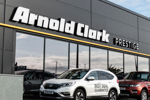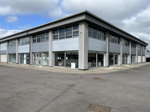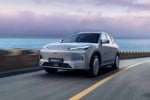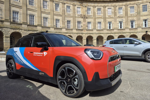Investment is minimum compared to an equivalent car franchise – you need only to have a bit of surplus room, yet returns are exceptional, typically 25% against new car margins of 3-10%.
It’s not a definite solution to a slow car market – dealers will get only what they put in.
Nonetheless, sales this year are up 2.5% compared to stuttering car sales, which are down half a percent.
Last year, car volumes went up by 2.5% while scooter and moped sales increased by more than 9%.
Success is dependent on several things.
“A lot of it depends on territory, population and traffic in a dealer’s local area,” said Frank Finch, of the Motorcycle Retailers’ Association.
Tony Campbell, Piaggio UK managing director, agrees: “A dealer needs to weigh up the territory. For Piaggio, depending on size, you would need to sell between 200 and 300 scooters a year for it to be worthwhile.”
He adds: “If dealers get it right, then it can be very successful. If the motor retailer isn’t giving it attention, then it will fail.”
Motorcycles are traditionally sold by bike enthusiasts, who love their market, so car retailers need to know their stuff to keep buyers happy.
However, scooters and mopeds run into the middle ground – dealers still need knowledge but not as much as a motorbike franchise.
“Scooter customers are little different to a car buyer,” says Campbell. “They are teenagers or people looking at an alternative method to a car, especially with the current fuel crisis.”
Shaun Holroyd, Boatian dealer network manager, thinks scooter and moped buyers generally know more about their intended purchase than a car buyer does.
Yet, he doesn’t think much training is needed: “It’s almost like teaching grandma how to suck eggs.”
Chinese brand Boatian, which currently holds franchises at 15 used car dealerships, expects £18,000 average investment from a new dealer.
Holroyd says dealers need to have a shop front and a work area to PDI the bike and prepare them for the customer. No specific training is provided to staff, but an adequate standard is “a given”.
Piaggio investment would be around £25,000 depending on site size and excludes the 17 models it expects dealers to stock. These are available by stocking facility. Otherwise initial outlay would be around £60,000.
As a rule, it asks that its three brands – Piaggio, Vespa and Gilera – are run alongside each other and are exclusive in a car dealership.
The presence of iconic brand Vespa means dealerships are expected to encourage it further.
“We insist that dealers buy into the Vespa brand in its entirety, because people are motivated by the brand and the lifestyle it represents,” says Campbell.
Popular aftersales items include casual wear, T-shirts and mugs.
Campbell thinks that these extras are a good income stream for dealers: “None of the car manufacturers per se, if you exclude high-end marques like Ferrari, have merchandise to offer customers for extra profit.”
The Italian scooter-maker says dealerships need to have dedicated staff. “People need to be motivated and excited about the product,” says Campbell.
Despite Piaggio and Boatian running very different set-ups, both give exceptional margins compared to car sales.
Boatian quotes between 25-30% margins, while Piaggio offers a maximum of 26% including bonuses, and a low of 21%.
There needs to be high-volume sale to benefit from good margins, due to the low-cost nature of the product.
Both manufacturers are looking for dealership opportunities.
Boatian is happy to be in showrooms against competitors because “purely on price-point we are competitive”, says Holroyd, and will work with anyone who wants to sell two-wheelers.
Piaggio acknowledges that small and medium car groups represent the most opportunity and, while dealers normally approach the company, the brand is planning to run a dealer recruitment campaign soon.













Login to comment
Comments
No comments have been made yet.